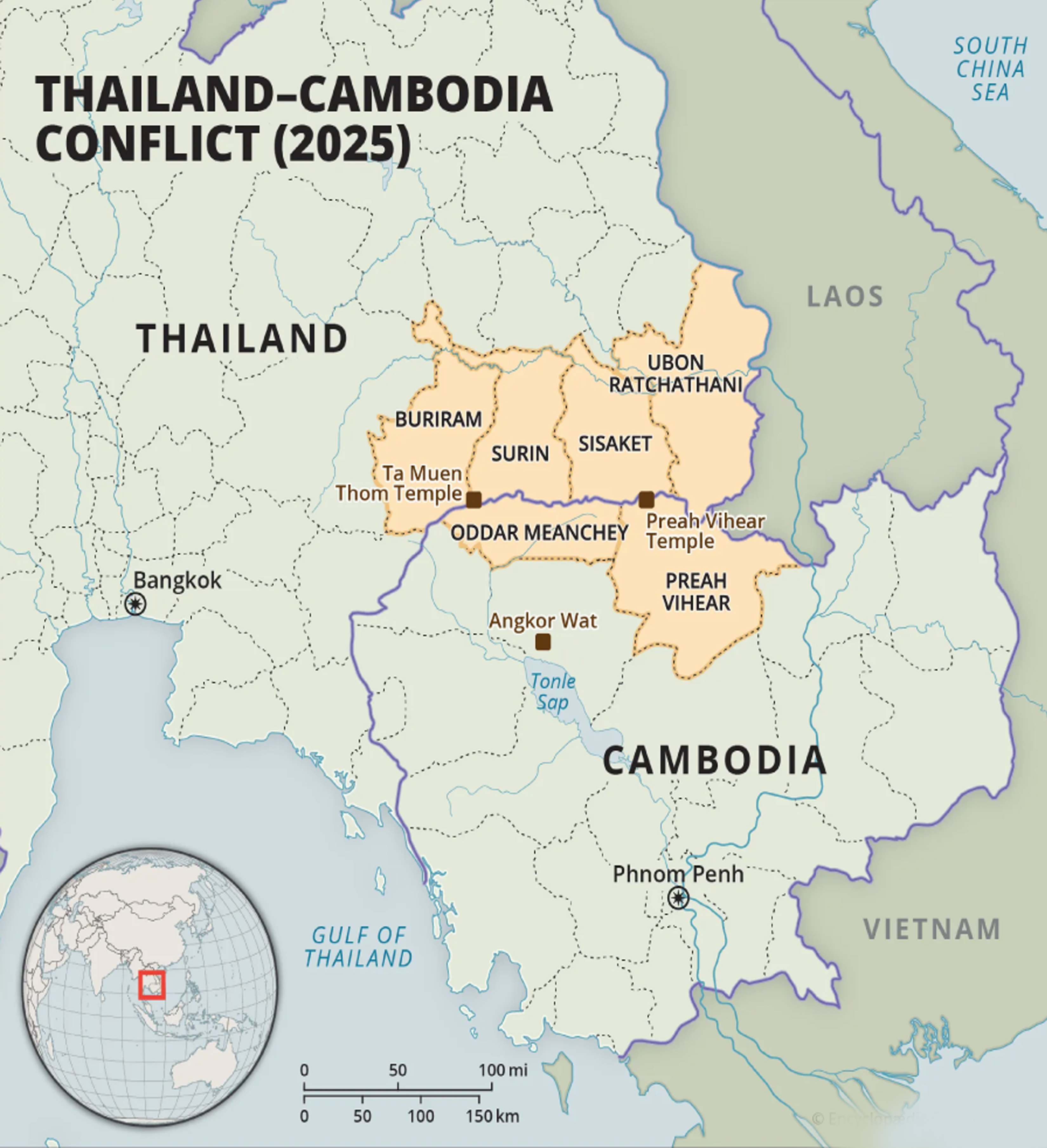Context:
US President Donald Trump is set to attend the ceremonial signing of a peace agreement between Thailand and Cambodia at the upcoming ASEAN summit in Kuala Lumpur, Malaysia. The agreement aims to formalize a ceasefire brokered by Malaysia and Trump in July 2025, which put an end to the deadliest military clashes in decades between the two Southeast Asian nations.
Background:
Thailand and Cambodia share an 817‑km un-demarcated border, portions of which remain ambiguous due to legacy colonial-era treaties (notably maps drawn by the French Indochina administration).
· A focal flashpoint has been the Preah Vihear temple area, claimed by both sides.
· The International Court of Justice (ICJ) in 1962 awarded sovereignty of the temple to Cambodia, but Thailand has sometimes resisted full acceptance of ICJ decisions in broader border issues.
The 2025 Escalation:
Clashes first flared in May 2025, when a Cambodian soldier was killed in a skirmish.
· Tensions escalated further in July. Between July 24 and 28, heavy exchanges of artillery, rocket fire, and air strikes erupted across multiple flashpoints.
First Ceasefire & Ongoing Tensions:
On July 28, 2025, an “immediate and unconditional ceasefire” was brokered, chiefly mediated by Malaysian Prime Minister Anwar Ibrahim and influenced by diplomatic pressure, including from Trump.
In the lead-up to the upcoming ASEAN summit, Malaysia and the U.S. have been working to broaden the framework of the ceasefire, especially regarding withdrawal of heavy weapons and landmine clearance.
Implications:
-
- For Thailand & Cambodia: A durable agreement would help restore border stability, facilitate return of displaced people, and revive cross-border trade and tourism.
- For the Region (ASEAN, Southeast Asia): Success would bolster ASEAN’s relevance in conflict resolution and reinforce norms of regional diplomacy. It may set a precedent for managing territorial disputes.
- For U.S. Foreign Policy: A successful signing would bolster U.S. claims of peacemaking influence in Asia, enhancing diplomatic capital. Conversely, failure would expose limits of exerting influence in sovereign border disputes.
- For Global Diplomacy: It could reinforce the idea of combining political, economic, and security tools in conflict management. It also shows how middle powers (Malaysia) and major powers (U.S.) can jointly facilitate peace.
- For Thailand & Cambodia: A durable agreement would help restore border stability, facilitate return of displaced people, and revive cross-border trade and tourism.







